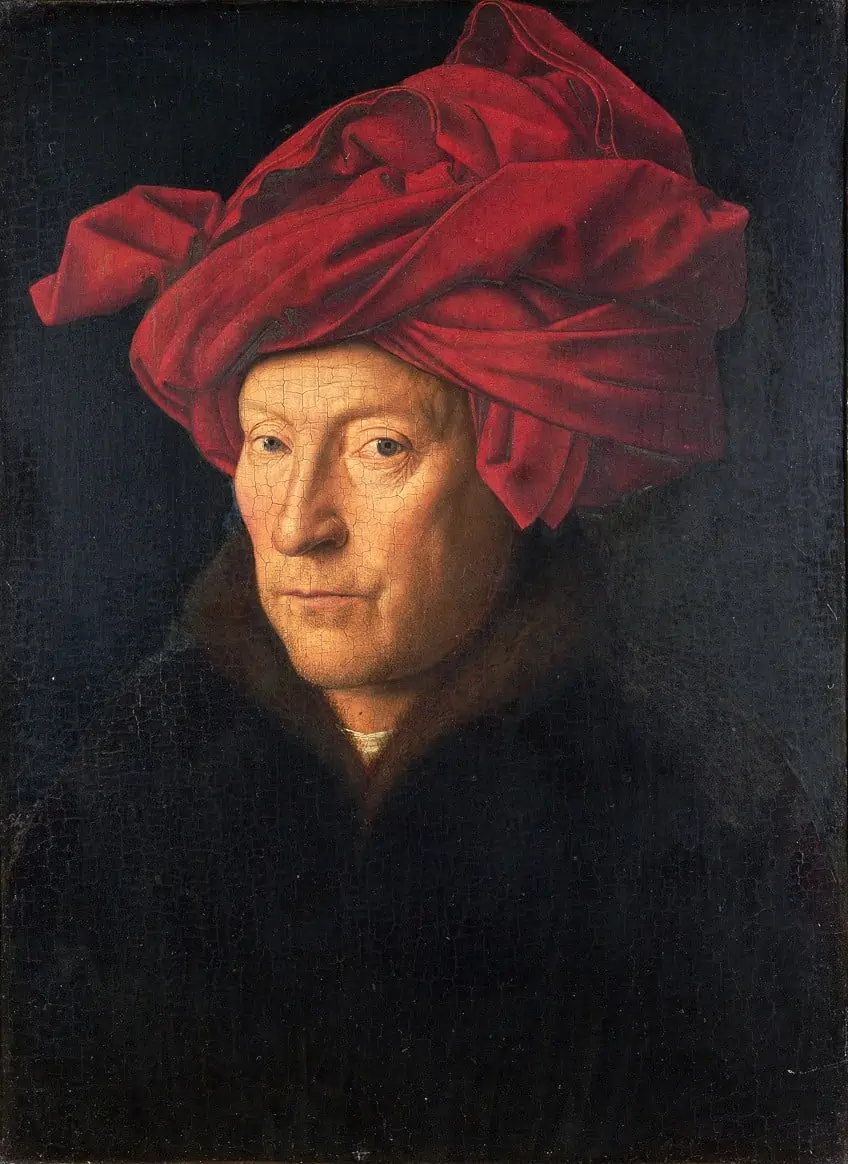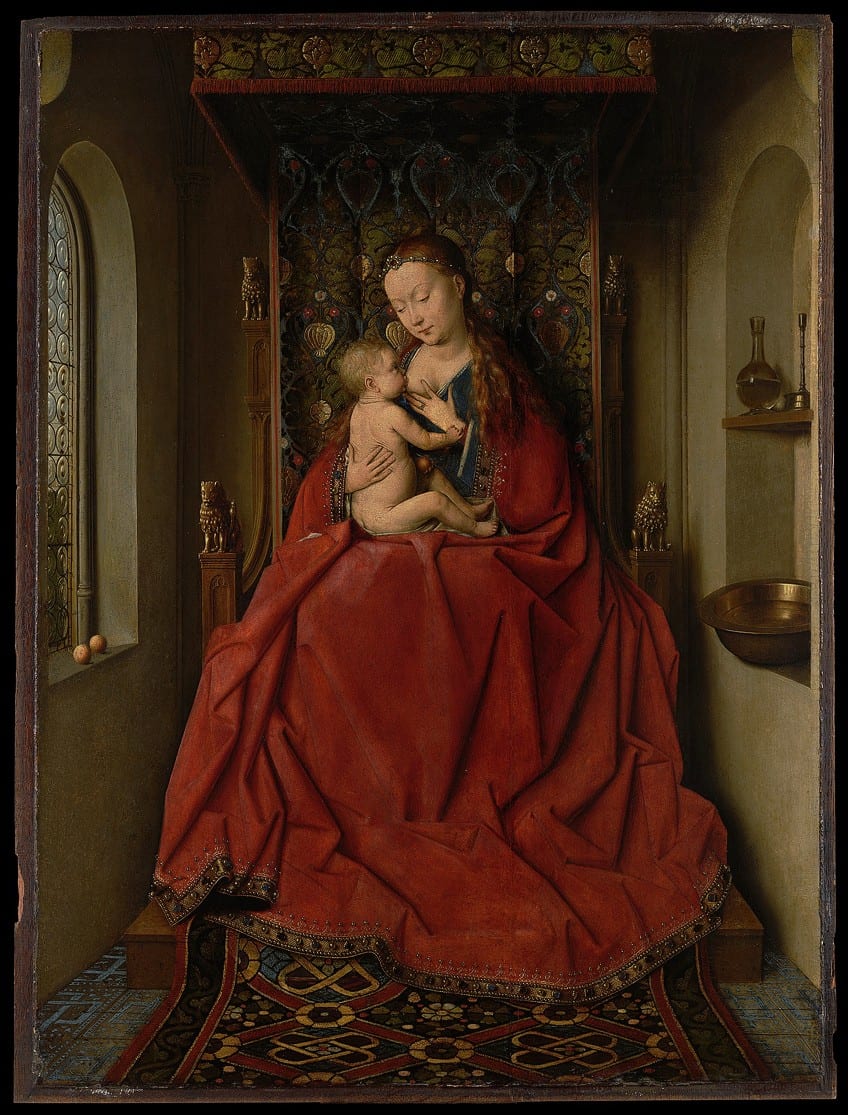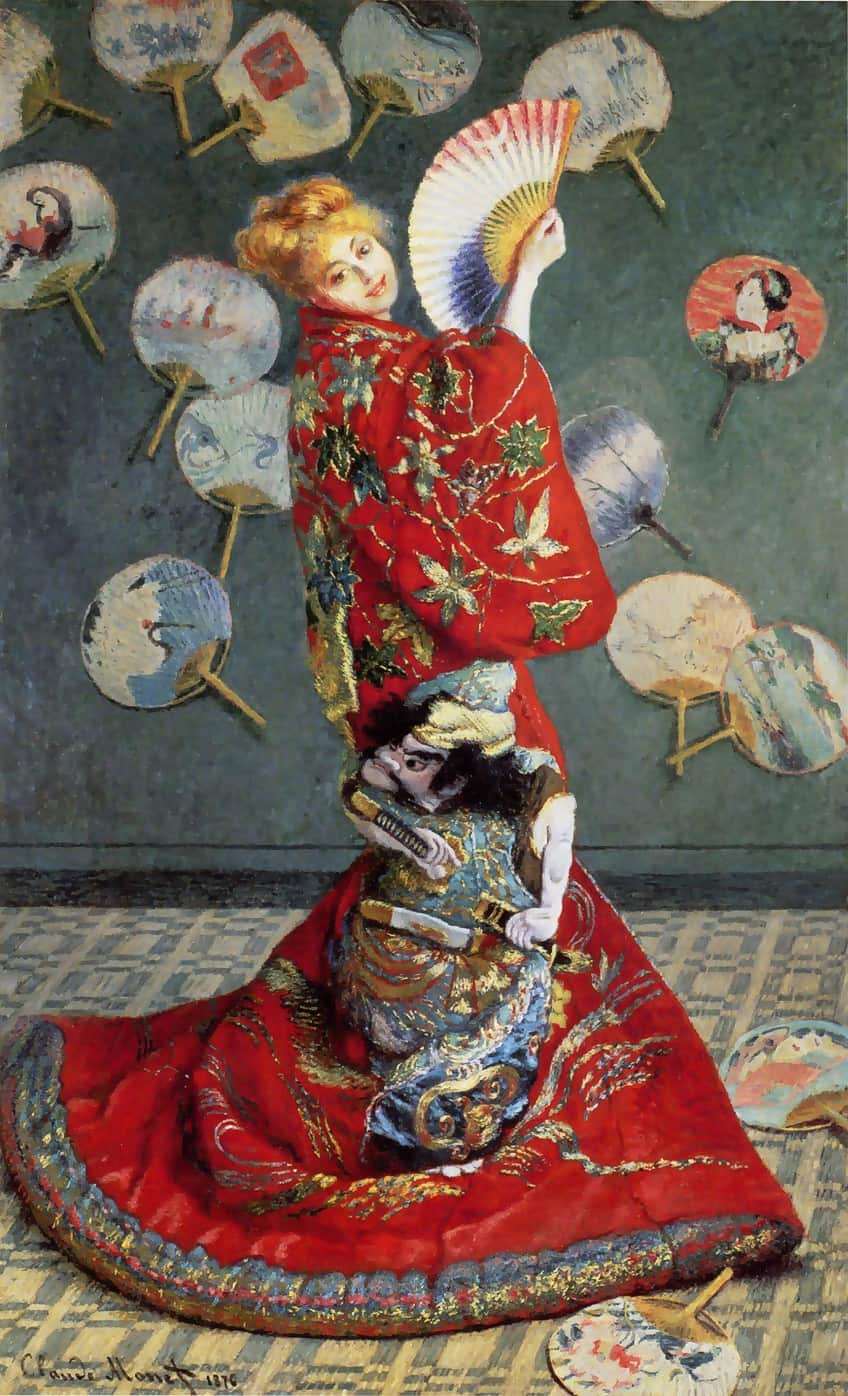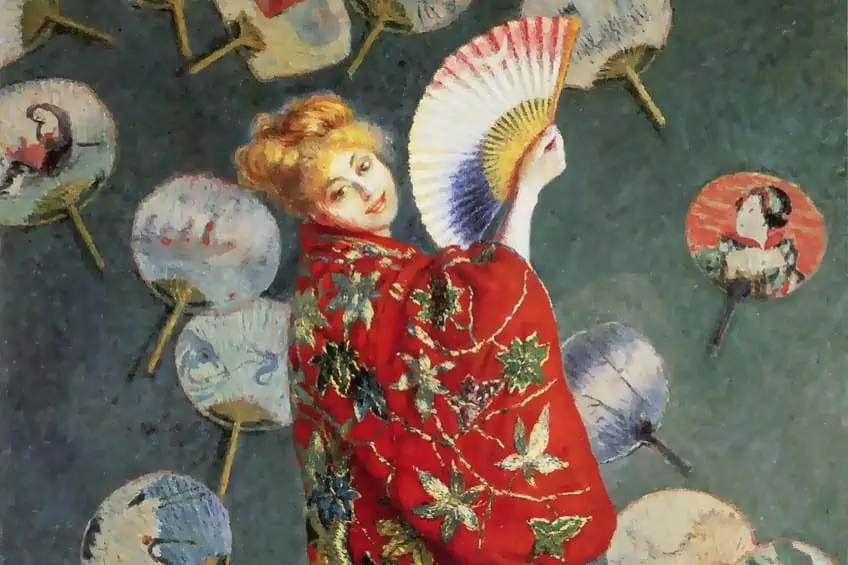Famous Red Paintings – Discover the Best Red Artworks
Red is among the first colors used by the human race to explore art and mark-making. The mineral pigment red ochre was the first “color” adopted by early humans, which has since evolved into hundreds of different shades. In this article, we will examine some of the most famous red paintings in the world and discuss the use of red in art and representation throughout history.
The Color Red in Art
Michel Pastoureau, a historian and specialist in the field of the history of color, sheds light on the color red and its history of representation. According to the historian, the color red has amassed a variety of meanings related to love, anger, divinity, lust, and blood (life).
With more than 100 different shades, the color red, and its variations, have been adopted by many cultures and artists for decorative and symbolic purposes.

The color red was treasured and prioritized during the Middle Ages in Western art history. Across the globe, the color red still maintains its significance in cultural and social practices. The medieval era saw a rise in the use of the color red for religious purposes. The antiquity era saw red as a signifier of wealth and power while Chinese culture saw it as a color associated with auspicious events such as marriage, prosperity, and good luck.
Despite its many symbolic meanings, red was not always viewed in a positive light.
During the Protestant Reformation of the 16th century, the color red became associated with negative connotations such as hellfire, luxury, gluttony, and immorality, which the Catholic church did its best to discourage. After the French Revolution, the use of red in art grew exponentially with the simultaneous association of the color red with radical political movements and justice.
The Top 10 Most Famous Red Paintings in Art History
Prehistoric art shows us some of the first examples of the use of the color red in art as well as early civilizations such as the Egyptians and Mayans who used red-pigmented pastes to decorate their faces for important rituals and ceremonies.
The European Renaissance saw the adoption of red in art as the leading symbol of Communism, which was also present in China following the Chinese Revolution in 1949.
The Aztec civilization in Latin America and many other indigenous societies utilized cochineal, which was a vibrant scarlet dye derived from insects and incredibly popular among European artists and Spanish-governed Mexico between the 16th and 19th centuries. In Buddhism, red was celebrated as one of the five colors associated with the enlightenment of Buddha and possessed the power to defeat evil. Below, you will find a list of the most famous paintings in red, including an overview of the significance of the color red in each painting.
Lucca Madonna (c. 1437 – 1438) by Jan van Eyck
| Artist | Jan van Eyck (1390 – 1441) |
| Date | c. 1437 – 1438 |
| Medium | Tempera and oil on panel |
| Dimensions (cm) | 66 x 50 |
| Where It Is Housed | Städel Museum, Frankfurt, Germany |
Lucca Madonna is an oil and tempera painting created between 1437 and 1438 by the famous Netherlandish painter Jan van Eyck. The striking red hue of the painting is found on the main subject, the Virgin Mary, who appears seated on the throne while breastfeeding baby Jesus.
The size of the painting indicates that it was made for decorative purposes and was once part of the collection of Charles II, the Duke of Parma, and Lucca during the 19th century.

The model wearing the red garment is identified as Margaretha, who was Jan van Eyck’s wife. The color red was popular in the 15th century and featured in many paintings of the Virgin, emphasized in her traditional red robe underneath a blue cloak. The symbolism behind the red drapery of her garment is linked to Christ’s passion, life, and energy.
The color also expresses Christ’s sacrifice and redemption as seen in many religious paintings.
La Japonaise (1876) by Claude Monet
| Artist | Oscar-Claude Monet (1840 – 1926) |
| Date | 1876 |
| Medium | Oil on canvas |
| Dimensions (cm) | 231.8 x 142.3 |
| Where It Is Housed | Museum of Fine Arts, Boston, United States |
This stunning attention-grabbing red painting by none other than famous French Impressionist Claude Monet is one of the best paintings in red to date. Although the entire painting is not executed in red alone, its main attraction is the red Japanese kimono that Monet’s wife, Camille Doncieux, wears.
La Japonaise captures the beautiful intricate details of the garment wrapped around Camille’s body.

The painting was first exhibited at the second exhibition of the French Impressionist group in 1876 and garnered much attention from the public. Considering that the creation of large-scale figures in painting was a challenging task to achieve, Monet seems to have completed this effortlessly. The painting is also a commentary on the Parisian appreciation for Japanese culture, which was a trend among creatives at the time.
Camille is also seen wearing a blonde wig in order to assert her Western identity.
The Dessert: Harmony in Red (1908) by Henri Matisse
| Artist | Henri Émile Benoît Matisse (1869 – 1954) |
| Date | 1908 |
| Medium | Oil on canvas |
| Dimensions (cm) | 180 x 220 |
| Where It Is Housed | State Hermitage Museum, St. Petersburg, Russia |
Housed in the permanent collection of the St. Petersburg Hermitage Museum, this famous painting by Henri Matisse is one of the best examples of the emphasis of red in art during the early 20th century. The Dessert: Harmony in Red is considered to be Matisse’s best masterpiece and follows the ideals set by the Fauvist movement and its predecessor, Impressionism due to the lack of a focal point in the artwork.
Initially, the red painting was commissioned to be “Harmony in Blue” but was scrapped by Matisse who was unhappy with the blue and chose to go with the color red.
Matisse’s choice reflects a sense of warmth through the composition, illustration of space, and the contrasts between the objects in the space. The painting is also reminiscent of Matisse’s other works that feature the common subject of a room decorated with objects such as vases and flowers.
One of the most beautiful elements of this painting is the luxurious berry-red fabric complemented by the flat blue-gray decorative motifs makes the room feel inviting.
The Red Studio (1911) by Henri Matisse
| Artist | Henri Émile Benoît Matisse (1869 – 1954) |
| Date | 1911 |
| Medium | Oil on canvas |
| Dimensions (cm) | 180 x 220 |
| Where It Is Housed | Museum of Modern Art, New York City, United States |
The Red Studio is one of the most famous red artworks by Henri Matisse, which is admired for the artist’s use of color during a time when many artists were not as experimental with such bold colors and methods of perspective in painting. Matisse’s studio makes use of a flat perspective to alter the viewer’s perception of space.
The painting was created in 1911, which coincided with Matisse’s exposure to traditional Islamic art in Spain.
This significantly influenced his approach to decoration, space, and patterns in painting. The Red Studio is thus a powerful prompt for the viewer to question their reality and perception of the environment. The painting is Matisse’s account of his reality and is considered a meditation on life, art, time, and space.
Red Hill and Bones (1941) by Georgia O’Keeffe
| Artist | Georgia Totto O’Keefe (1887 – 1986) |
| Date | 1941 |
| Medium | Oil on canvas |
| Dimensions (cm) | 75.6 x 101.6 |
| Where It Is Housed | Philadelphia Museum of Art, Philadelphia, United States |
In 1929, Georgia O’Keefe turned to the beautiful landscape of New Mexico and spent the next six decades dedicated to capturing its essence in her paintings. In this famous red artwork, O’Keefe uses a varied array of red tones to depict the red hills of the American Southwest landscape. The foreground is occupied by the bleached bones that remind us of the arid nature of the region near the artist’s home, Ghost Ranch.
While many view this region as a barren wasteland, O’Keefe brings a sense of vibrancy and character to the desert landscape.
One can also appreciate the perceived aridity of the landscape, which allowed some of the world’s earliest artworks to survive. Red, as found in ochre pigments in early cave art, presents as the color we perceive as red due to it containing hematite. It was only during the Upper Paleolithic period that early artists began using red pigment as a medium for drawing and painting.
One of the oldest red artworks dates to between 20,000 and 14,000 BC and can be seen on the cave walls of Altamira, Spain.
Adam (1951 – 1952) by Barnett Newman
| Artist | Barnett Newman (1905 – 1970) |
| Date | 1951 – 1952 |
| Medium | Oil on canvas |
| Dimensions (cm) | 242.9 x 202.9 |
| Where It Is Housed | Tate Gallery, London; on loan from the Albertina Museum, Vienna, Austria |
Defined by its assertive red stripes against a backdrop of dark brown, Barnett Newman’s Adam is one of the most famous red paintings from the 20th century that draws attention to the traditional references that Newman was inspired by. During this period, Newman was invested in the narratives of the Jewish myths of creation and used vertical stripes to reflect the presentation of God and man in the form of a single light beam.
Adam refers to the biblical character of the Old Testament, who was also the first man and was derived from the Hebrew word for earth, adamah.
The word also carried associations with the words adom (red) and dam (blood), which, in the painting, refers to the intimacy between man and the Earth. Newman’s process involved painting a thin layer of crimson oil paint on the primed cotton duck canvas and after drying, he applied masking tape to outline the two stripes. He then applied brown paint evenly across the canvas, over the tape, and lastly clarified the edges with a knife.
The crimson red stripes were then darkened after Newman covered the brown areas with tape but this caused the red paint to seep over on the brown.
Newman then added more brown paint to redefine the edges and a year later, he changed the composition by including a central stripe. He also rubbed down some of the brown paint and added a red stripe that was glossier than the previous attempts.
Two Red Fish (1954) by Joseph Beuys
| Artist | Joseph Heinrich Beuys (1921 – 1986) |
| Date | 1954 |
| Medium | Watercolor on paper |
| Dimensions (cm) | Support: 39.9 x 46.6, and frame: 67.5 x 54.1 x 2.9 |
| Where It Is Housed | Tate Gallery, London, United Kingdom |
Two Red Fish is a famous red painting executed in watercolor by the well-known German Fluxus artist, Joseph Beuys in 1954. The painting depicts two fish painted in red and reflects Beuys’ sculptural works, which were inspired by animals of the sea. Color was important for Beuys since he used it as a material that was representative of life and blood.
The fish was a symbol of life that is also used by several other religious groups and for Beuys, it represented continuity and evolution, which was not accessible to man in the same way.
No. 301 (Reds and Violet over Red/Red and Blue over Red) (1959) by Mark Rothko
| Artist | Markus Yakovlevich Rothkowitz (1903 – 1970) |
| Date | 1968 |
| Medium | Oil on canvas |
| Dimensions (cm) | 236.86 x 205.74 x 4.45 |
| Where It Is Housed | Museum of Contemporary Art, Los Angeles, United States |
This is one of Mark Rothko’s best red paintings that is also an example of the impact that Rothko’s use of color in Abstract art had on the art world and the perception of painting. The painting was made using two different shades of crimson.
It was executed in Rothko’s signature style of color field painting.
Ten-Thousand Mountains Bathed in Red (1962 – 1964) by Li Keran
| Artist | Li Keran (1907 – 1989) |
| Date | 1962 – 1964 |
| Medium | Ink and color on paper; vermillion pigment |
| Dimensions (cm) | 131 x 84 |
| Where It Is Housed | Information Unavailable; potentially in a private collection |
Wan Shan Hong Bian translates to Ten-Thousand Mountains Bathed in Red is one of the most famous paintings in red by one of the best Chinese Contemporary guohua painters, Li Keran (Sanqi). The use of red in Chinese culture has occupied the social lives of many people and is associated with things that are classical, auspicious, and vigorous.
The color also encompasses all things with a rich spiritual meaning and, to this day, it is considered an important color in Chinese culture.
An exhibition in Beijing titled Red hosted a display of some of the 20th century’s finest ink-and-color artists, which featured this work by Li Keran. Upon first glance, one can see the masterful brushwork by the artist as he painted a stunning large-scale landscape inspired by a poem authored by Chairman Mao Zedong. The landscape is set in autumn and contains monumental mountains followed by a gentle waterfall, streams, and a small village that stands out among the trees.
According to Wang Huanran, a visual designer from the Beijing Fine Art Academy, the exhibition was aimed at proving how the color red was used to describe the “different atmospheres and feelings in classical Chinese art”.
Untitled (1962 – 1979) by Donald Judd
| Artist | Donald Clarence Judd (1928 – 1994) |
| Date | 1962 – 1979 |
| Medium | Woodcut printed in cadmium red oil paint |
| Dimensions (cm) | 55.7 x 75.8 |
| Where It Is Housed | Princeton University Art Museum, New Jersey, United States |
This famous red painting by Donald Judd is striking as it presents an exploration of the cadmium red shade, which forms an integral part of Judd’s works in printmaking and sculpture. The red artwork above is a woodcut printed using cadmium red oil paint to create a stamp effect with different strips of red separated by negative spaces.
Judd was inspired by Barnett Newman’s use of the color red in his famous “zips” artworks, which disrupted artistic traditions in the division of ground and figure in painting.
Donald Judd’s use of printmaking as a medium to create this red artwork serves as a “logical extension” of his vast interest in Minimalism, the mechanical nature of production, as well as the collaborative nature of modes of fabrication.
The color red in art takes on a multitude of meanings as emphasized in the paintings above. With more than 100 shades to explore, the color red makes for a wonderful subject of study that can bring not only a sense of boldness to your painting but also deep symbolism, emotion, and visual appeal.
Take a look at our most famous red paintings webstory here!
Frequently Asked Questions
How Many Shades of Red Are There?
There are approximately more than 122 shades of red in varied color codes that can be found today. Likewise, there are also over 40 different ways to describe the color and its varying shades.
What Is the Significance of the Color Red?
The significance of the color red is vast and includes the color serving as a symbol of love, lust, holy blood, fidelity, good luck, anger, danger, royal power, prosperity, freedom, and liberty among many other connotations.
How Was Red Paint Made in the Past?
Red paint was made using a mixture of iron oxides like hematite to create a red pigment and can be found in many early cave paintings. Other shades of red such as scarlet and vermillion were created from crushed cinnabar.
Jordan Anthony is a Cape Town-based film photographer, curator, and arts writer. She holds a Bachelor of Art in Fine Arts from the University of the Witwatersrand, Johannesburg, where she explored themes like healing, identity, dreams, and intuitive creation in her Contemporary art practice. Jordan has collaborated with various local art institutions, including the KZNSA Gallery in Durban, the Turbine Art Fair, and the Wits Art Museum. Her photography focuses on abstract color manipulations, portraiture, candid shots, and urban landscapes. She’s intrigued by philosophy, memory, and esotericism, drawing inspiration from Surrealism, Fluxus, and ancient civilizations, as well as childhood influences and found objects. Jordan is working for artfilemagazine since 2022 and writes blog posts about art history and photography.
Learn more about Jordan Anthony and about us.
Cite this Article
Jordan, Anthony, “Famous Red Paintings – Discover the Best Red Artworks.” artfilemagazine – Your Online Art Source. November 4, 2022. URL: https://artfilemagazine.com/famous-red-paintings/
Anthony, J. (2022, 4 November). Famous Red Paintings – Discover the Best Red Artworks. artfilemagazine – Your Online Art Source. https://artfilemagazine.com/famous-red-paintings/
Anthony, Jordan. “Famous Red Paintings – Discover the Best Red Artworks.” artfilemagazine – Your Online Art Source, November 4, 2022. https://artfilemagazine.com/famous-red-paintings/.



